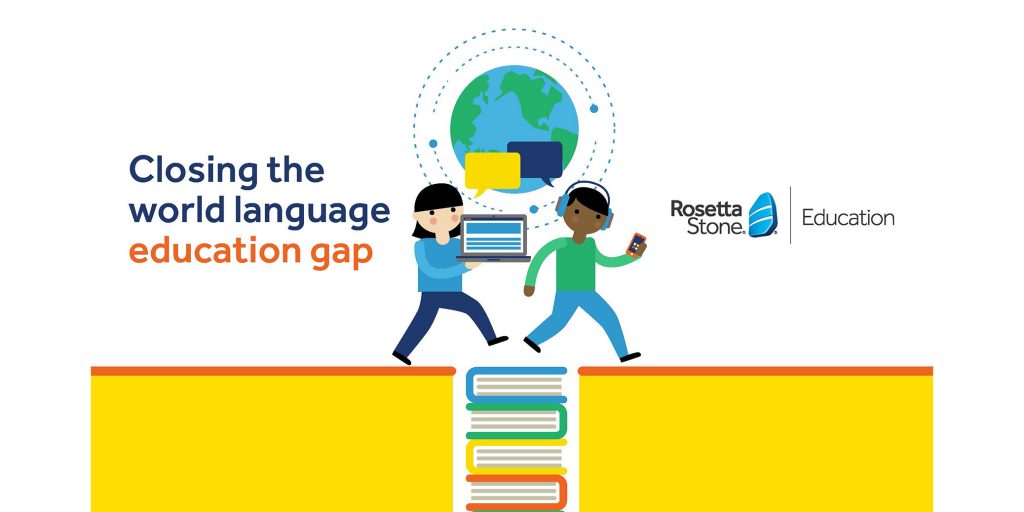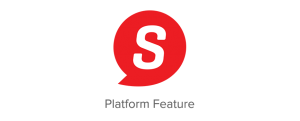Every piece of content should be written in a language and tone befitting your audience. But do you know how to create content that speaks to them?
Take Rosetta Stone for instance, they grew from a model that was all about language learning and moved into education technology. With millions of learners worldwide, the company has expanded its offerings and propelled the learning of a second language for native english speakers.
Tanya Mas, Director of Global Marketing – Demand Generation & Content Strategy at Rosetta Stone, initiated contact with Visually to expand the reach of internally developed content for their marketing programs. Some of content pieces Visually has created for Rosetta Stone are: Closing the World Language Education Gap, and Meeting The Ell Challenge.

As the Global Marketing Director, Tanya is responsible for the strategy and execution of demand generation programs for the Enterprise & Education verticals in the US, UK, and DACH region. Prior to becoming the Global Marketing Director, she was the Senior Education Marketing Manager for Rosetta Stone. In this role, she was responsible for the overall go-to market strategy for the K-12 and Higher Education verticals. She also designed and managed the strategic development and implementation of all marketing programs. Tanya has been with Rosetta Stone for almost 5 years.
In this interview, Tanya shares her experience and insights on creating content that successfully resonates with her audience.
Personas & Content Creation
Q: What kind of persona or personas are you going after with your content?
A: We are going after district administrators and also teachers. Those are our two main targets, and it’s usually word language administrators and ELL administrators who recommend instruction directors. We also look at adult education and federal programs. For the business side, of course dealing with mainly training and development, H.R., line of business.
Q: What types of content did you end up developing with Visually?
A: We’ve designed multiple infographics and a couple of ebooks. And I believe one or two video graphs.
Q: Do you have any examples that you could talk about in terms of how you’re able to atomize that content?
A: One of the most recent examples was about classroom integration. We did a classroom integration webinar earlier last year and leveraged Visually resources to create an e-book out of it. Then from there we created some micro content that could be leveraged on social media, and that drove some of our email marketing programs.
The key is to make the most out of that one anchor asset and leverage it in different ways and forms because not everybody consumes the information in the same format or on the same channel.
Q: Can you give me an example of what the buyer journey looks like at Rosetta Stone and when you were working with us, and what gaps you had identified?
A: One area of deficit that I had for a long time was teachers. We focused most of our attention on the decision maker and making sure that they had what they needed to make a decision, but we were ignoring the teacher.
And at the end of the day regardless of where the decision is made, teachers are an integral part of the decision making process because we are a subscription-based business, and the person who’s implementing that product is the teacher. If they’re not happy with what we’re providing them, and they’re not seeing that we’re providing them with the right resources to integrate our product into the classroom then we’re missing the bottom line. So we did a lot of pieces with Visually that were highly focused on connecting the dots for the teachers and what the implementation would look like in the classroom.
Ensuring the Success of Your Content
Q: How were you able to actually measure the effects of your content?
A: It’s kind of a comprehensive approach. We treat it as a campaign, so not as one particular piece of content. The way we actually measure whether it was successful or not is based on the click-throughs, the open rate, or the form submits for that particular asset. But we tend to be more comprehensive in terms of how we look and not just focus on one particular piece.
Q: But I guess the emphasis then is that it’s a very cross-functional kind of approach?
A: Definitely. Now I think that in order to make anything successful, you have to work across departments. Teams, especially marketing and sales, have to be interconnected and if you’re working in silos then you’re going to miss the mark.
Q: Do you have any tips or advice on how people can approach different departments in order to get that cooperation?
A: I definitely think early on engagement is extremely important. When you’re starting to draft your plans for the next year, the next quarter, or even with content ideation, it’s best to bring everybody together and have those meetings on what has been successful in the past.
For instance, salespeople have their foot on the ground. They’re able to better understand what their customers and clients are looking for and what has been impactful based on the conversations they have had. Having those ‘voices from the field’ types of engagement where they’re able to relay what they see out there, is extremely important.They tell us marketers what they would like to see more of based on their success.
The same thing with client services, and if you have a training team. They’re the ones that are connecting with the customer on a regular basis. So ensuring that they’re weighing in on what we’re doing and that we have the general understanding on what’s happening there is extremely important. At the end of the day, all these different points of view should align with the bottom line.
Main Takeaways:
- Use a targeted approach when creating your content. There is no one size fits all.
- Map out your customer journey and decide what type of content needs to be created. Then atomize your content so you get the most out of that one asset.
- True success of your content happens when there’s collaboration with other departments. This ensures that the asset is reaching the audience and resonating with their pain points.
You can follow Tanya on:
LinkedIn: linkedin.com/in/tanyamas
Twitter: @linguamaterna (https://twitter.com/linguamaterna)
Follow Rosetta Stone: https://www.linkedin.com/company/rosettastone









